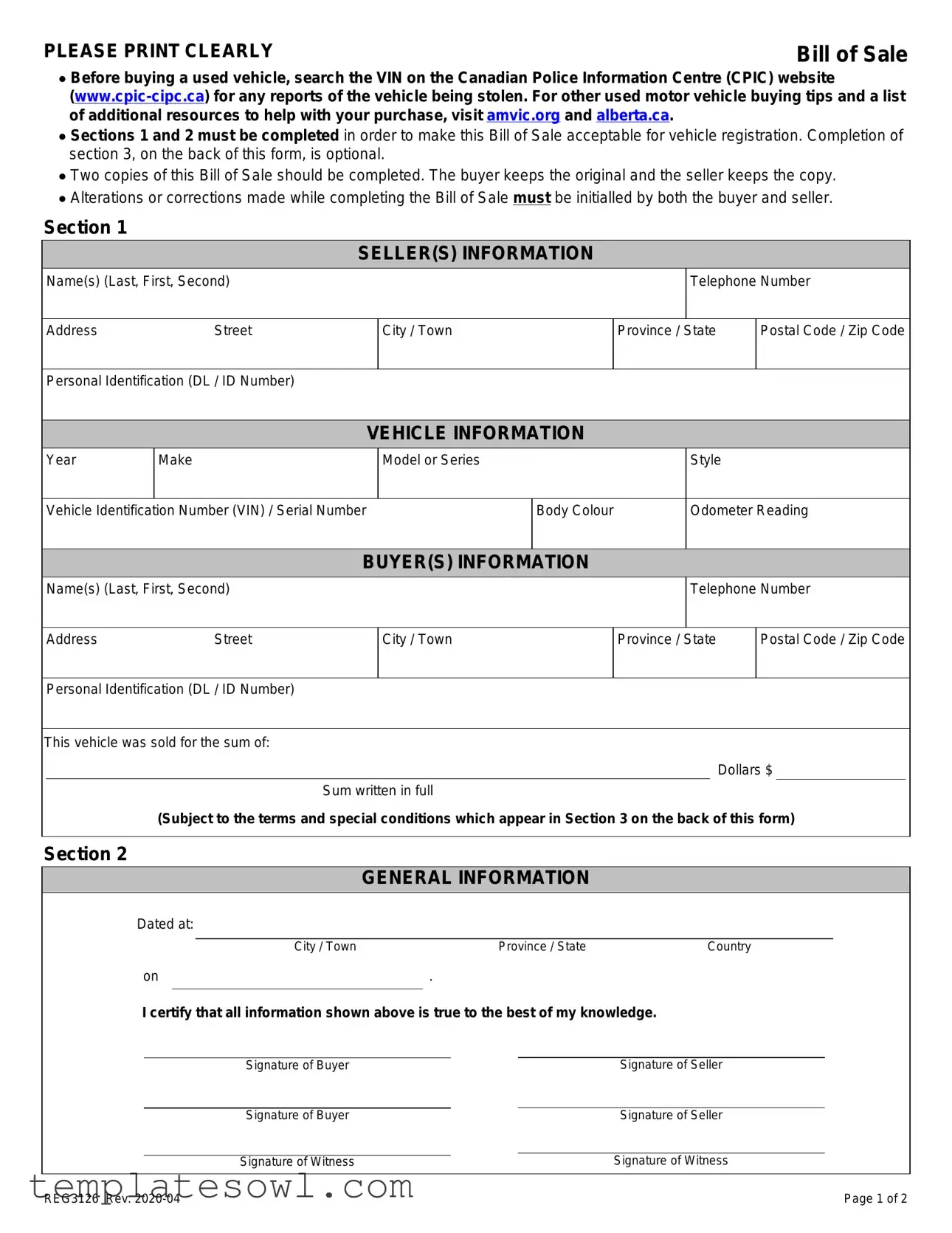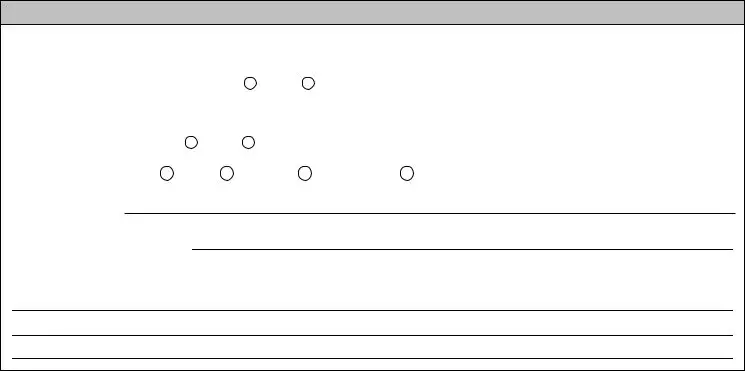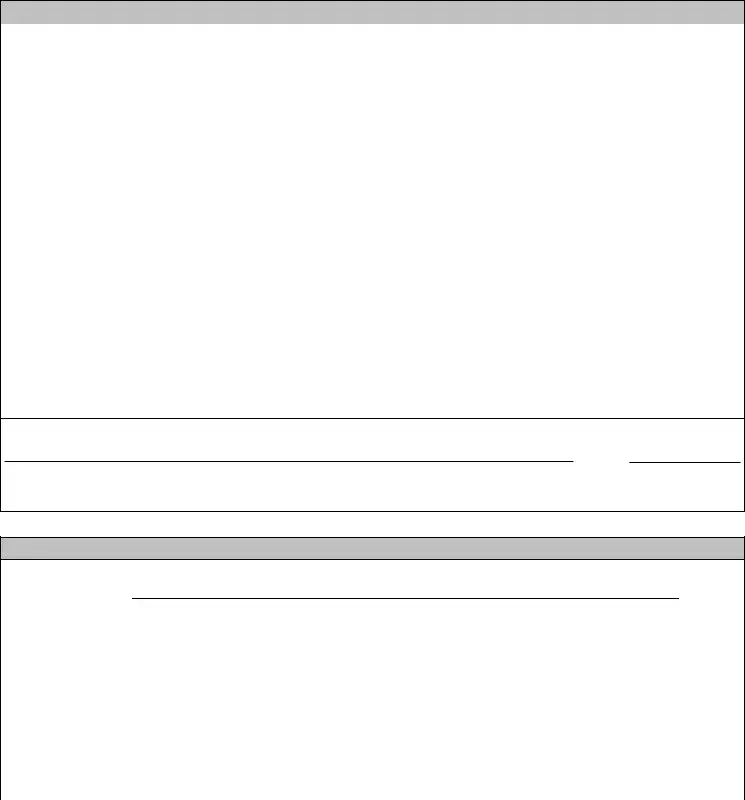What is the purpose of the Alberta Bill of Sale form?
The Alberta Bill of Sale form is a legal document used to transfer ownership of a vehicle from the seller to the buyer. It provides essential information about the vehicle, the parties involved, and the terms of the sale. Proper completion of this form is necessary to facilitate vehicle registration in Alberta.
What information is required in the Bill of Sale form?
Sections 1 and 2 of the form must be filled out with details including the names and addresses of the buyer and seller, vehicle information such as the make, model, and VIN, along with the sale price. Optional Section 3 allows for special conditions related to the sale.
Do both the buyer and seller need to sign the form?
Yes, both the buyer and seller must sign the Bill of Sale. Their signatures confirm that all information provided is accurate and that both parties agree to the terms of the sale.
What should be done if there are alterations made on the form?
If any alterations or corrections are made during the completion of the Bill of Sale, both the buyer and seller must initial those changes. This helps to maintain the integrity of the document and confirms agreement on the alterations.
Should copies of the Bill of Sale be kept?
It is important to complete two copies of the Bill of Sale. The seller keeps one copy while the buyer retains the original. This ensures that both parties have a record of the transaction for their records.
Is it necessary to check the vehicle identification number (VIN)?
The buyer should verify the VIN against the Canadian Police Information Centre (CPIC) database to ensure the vehicle has not been reported stolen. This is a crucial step in protecting against purchasing a vehicle with potential legal issues.
What are the insurance requirements for vehicle registration in Alberta?
In Alberta, a vehicle must be insured before it can be registered. Buyers must provide documentary proof of insurance when registering the vehicle. This requirement helps to ensure compliance with provincial laws regarding vehicle operation.
What happens if the vehicle has outstanding liens or encumbrances?
If there are any liens or encumbrances on the vehicle, this must be disclosed in the Bill of Sale. Buyers are encouraged to verify the status of a vehicle by contacting a registry agent prior to purchase to avoid potential complications.
What steps should be taken if the vehicle was purchased from another province?
If the vehicle comes from another jurisdiction, it may require an out-of-province safety inspection. Prospective buyers should consult a registry agent for guidance on the specific requirements and processes involved in registering an out-of-province vehicle in Alberta.
What is the legal status of the Bill of Sale regarding disputes?
The Bill of Sale form provided does not attach any liability to the Crown in Alberta. Any disputes arising from the sale of the vehicle are considered civil matters. It is advisable for parties involved to seek resolution through mutual agreement or legal channels if necessary.


